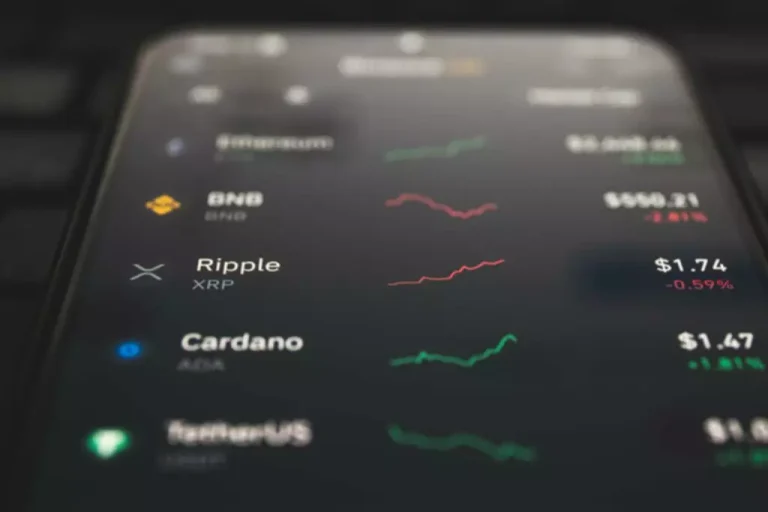Content
They fulfill this by consistently providing buy and sell quotations, allowing traders to execute their orders instantaneously. In the absence of LPs, trading might experience considerable time lags or even gaps. Such disruptions could lead to adverse market conditions, hampering the ability of traders to transact when they want, potentially leading to financial losses. The presence of LPs ensures that the market remains functional and efficient, providing an environment conducive to seamless trading. Arbitrage involves taking advantage of price differences in different markets, and liquidity providers liquidity provider vs market maker often engage in this practice to ensure prices remain consistent across exchanges.
How Liquidity Providers Facilitate Market Efficiency?
SLPs were created to add liquidity and to complement and compete with existing quote providers. SLPs are also required to average 10 million shares https://www.xcritical.com/ a day in provided volume to qualify for enhanced financial rebates. When a company launches an IPO or other stock issue, it must select its market maker/liquidity provider carefully. The chosen company should meet high standards of reliability, honesty and integrity. It should also be highly visible and have an easy-to-find and navigate website and offer high quality online services. A dishonest market maker can manipulate the market for its own profit and seriously damage its client companies.
- SLPs are only allowed to trade for their proprietary accounts, and not for public customers or on an agency basis.
- By minimizing this spread, liquidity providers contribute to market efficiency and enable traders and investors to execute transactions with greater ease and at fair prices.
- In the ever-evolving landscape of financial markets, liquidity provision plays a pivotal role.
- In the United States, the NYSE and American Stock Exchange (AMEX), among others, have designated market makers, formerly known as “specialists”, who act as the official market maker for a given security.
- In summary, liquidity is essential for efficient functioning, risk management, and stability in financial markets.
- The role of a liquidity provider is multifaceted and integral to the seamless operation of financial markets.
“Liquidity providers” also found in:
On the other hand, low-volume stocks may be harder to buy or sell, as there may be fewer market participants and therefore less liquidity. Before becoming an LP, it’s essential to understand market dynamics and have a risk management strategy in place. The fluctuating nature of the markets means that liquidity providers often have to adjust their strategies based on market conditions.
Can brokers benefit from social trading services in 2024?
Diving into the world of financial markets, have you ever wondered about the mechanics that make trades so smooth and quick? Ever thought about the invisible hand that ensures a steady stream of prices at all times? That’s the role of a Liquidity Provider, a fundamental but often overlooked player in the markets. Liquidity provision in modern markets requires diversity among liquidity providers to facilitate risk transfer and efficiently match buyers with sellers during continuous trading. When an investor with a large amount of capital buys and sells extensive quantities of an asset, the impact on prices and other investors could be dramatic. Liquidity providers help the markets maintain equilibrium even in the face of large transactions.
“Liquidity Provision” also found in:
Institutions do not need to provide information to OSFI related to the above financial sector information tool, rather OSFI will obtain such information from its regular monitoring of indicators relevant to the financial sector. Thomas J Catalano is a CFP and Registered Investment Adviser with the state of South Carolina, where he launched his own financial advisory firm in 2018. Thomas’ experience gives him expertise in a variety of areas including investments, retirement, insurance, and financial planning.
If this happens and the markets fall, it can create a further rush by investors to sell. Many of the exchanges, of course, have parameters and procedures in place to prevent disastrous consequences. When choosing a liquidity provider, brokers must carefully consider factors such as reputation, liquidity depth, pricing, instrument range, and risk management capabilities. By partnering with reputable and reliable LPs, brokers can create a robust trading ecosystem that fosters success and profitability for all stakeholders involved. The most liquid stocks tend to be those with a great deal of interest from various market actors and a lot of daily transaction volume.

Additionally, the Liquidity Bridge offers advanced order routing capabilities, enabling brokers to define rules for order execution based on various factors like client type, account balance, and symbol. These rules ensure that each trade is executed optimally, minimizing slippage and maximizing efficiency. Brokeree’s Liquidity Bridge is a cutting-edge solution that empowers brokers to efficiently connect and aggregate liquidity from multiple providers. This innovative bridge seamlessly integrates with popular trading platforms like MetaTrader 4 and 5, making the process hassle-free for brokers.

Large trading firms serve as market makers across the capital markets, including those for equities, fixed-income securities, and derivatives. When a retail investor buys a security from a trading firm that is acting as principal, the firm fills the order using its own inventory, allowing it to benefit from the bid-ask spread. Liquidity providers are integral to the trading industry, serving as the backbone of efficient and dynamic market operations. Brokers rely on these providers to access deep liquidity, competitive pricing, and reliable execution for their clients. With Brokeree’s Liquidity Bridge, brokers can efficiently connect and aggregate liquidity from multiple providers, enhancing their trading environment and offering superior services to their clients. By utilizing the services of LP, brokers can access a vast pool of assets and diversify their product offerings, which allows them to cater to a broader range of clients.
Liquidity providers are financial institutions or entities that facilitate the trading of assets by offering to buy or sell them at any given time. They play a crucial role in ensuring that there is sufficient market liquidity, meaning that buyers and sellers can execute trades quickly without causing significant price fluctuations. This is vital in forex markets where vast amounts of currency are exchanged daily, allowing for efficient price discovery and risk management. Other types of financial institutions play key roles in shoring up the liquidity of various asset classes. For instance, securities firms and other financial companies serve as designated market makers (DMMs) for the New York Stock Exchange. DMMs are among the exchange’s core liquidity providers, responsible for the availability and orderly trading of an assigned list of stocks.
The liquidity provider, or market maker, owns a significant volume of a company’s shares; this enables it to fill buy and sell orders from brokers providing the prices are within a range it considers acceptable. By doing so, it increases the liquidity of the shares by making trades quick and easy — and stabilizes the market by reducing wild fluctuations in the buy and sell bid prices. By allowing or withholding trades, it exerts a strong influence over the market price of the shares. The concept of market depth refers to the market’s capacity to sustain relatively large market orders without impacting the price of the security. LPs play an instrumental role in enhancing market depth by placing sizeable buy and sell orders into the market.
Adam Hayes, Ph.D., CFA, is a financial writer with 15+ years Wall Street experience as a derivatives trader. Besides his extensive derivative trading expertise, Adam is an expert in economics and behavioral finance. Adam received his master’s in economics from The New School for Social Research and his Ph.D. from the University of Wisconsin-Madison in sociology. He currently researches and teaches economic sociology and the social studies of finance at the Hebrew University in Jerusalem. Book Cost Estimation plays a crucial role in the process of writing and publishing a book. With years of experience in the thrilling world of cryptocurrency, I have dedicated my time to understanding the complexities and trends of this ever-evolving industry.
The trading environment shaped by LPs—efficient, transparent, and stable—motivates more participants to get involved in the market. With more participants, the market becomes more robust and diverse, leading to increased liquidity and a healthier market ecosystem. LPs essentially create a conducive trading environment that is attractive to a wide range of participants, from individual investors to large institutional traders. By injecting a steady stream of buy and sell orders into the market, LPs help to balance supply and demand.
LPs are required to continuously display their bid (buy) and ask (sell) prices, revealing the depth of liquidity at each price level. This practice brings a level of transparency to the market, allowing traders to make informed decisions based on real-time data. Such transparency also builds trust and confidence in the market, ensuring that all participants have equal access to trading information. In simple terms, a Liquidity Provider (LP) is an entity that allows trades to happen by providing ‘liquidity,’ which is just a fancy way of saying they make sure there are enough buy and sell orders at any given time.
Some of the LSE’s member firms take on the obligation of always making a two-way price in each of the stocks in which they make markets. Their prices are the ones displayed on the Stock Exchange Automated Quotation (SEAQ) system and it is they who generally deal with brokers buying or selling stock on behalf of clients. The activities of core liquidity providers sustain many routine practices in the market, such as hedging. In the commodities markets, for instance, farmers and food processing companies invest regularly to protect their businesses against declines or increases in future crop prices.